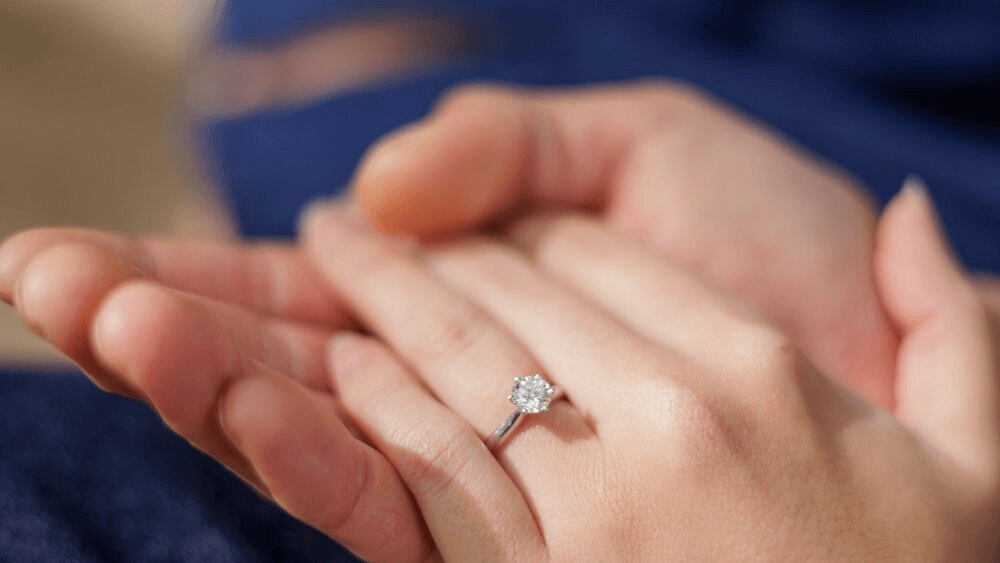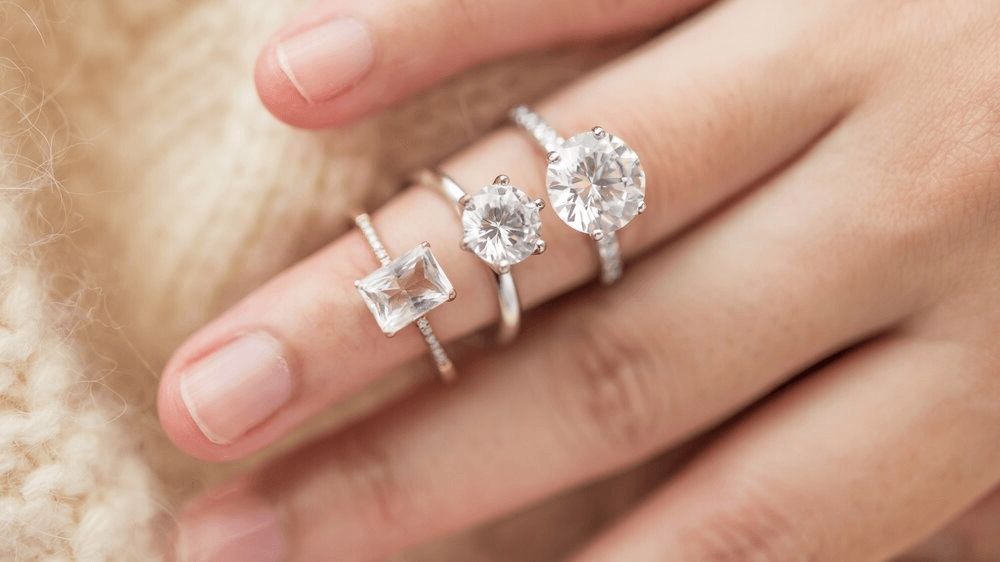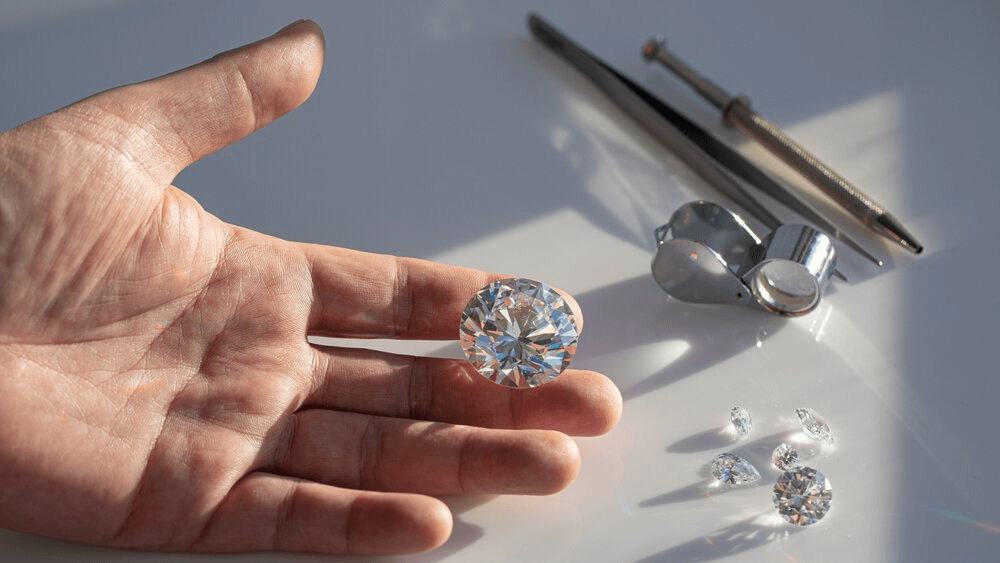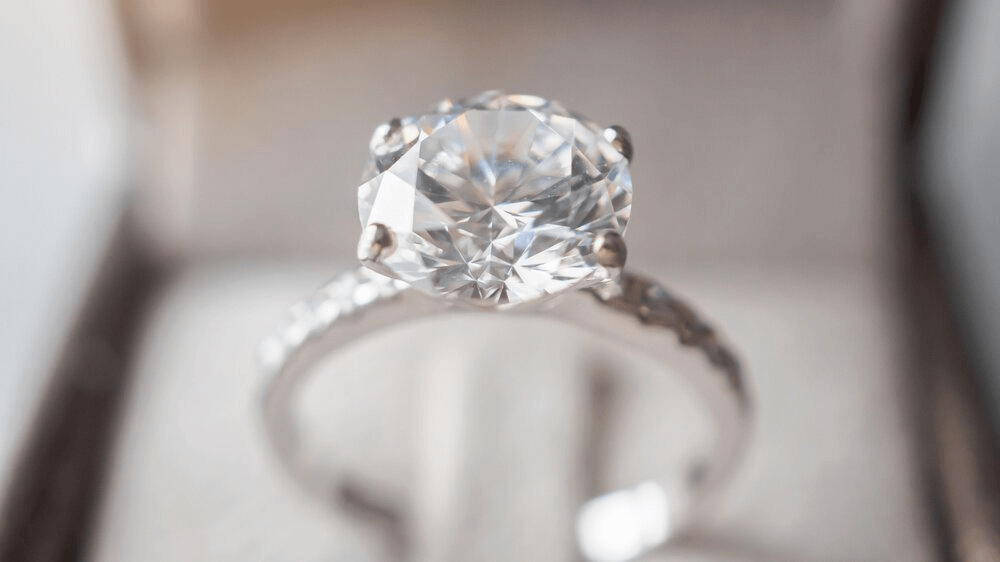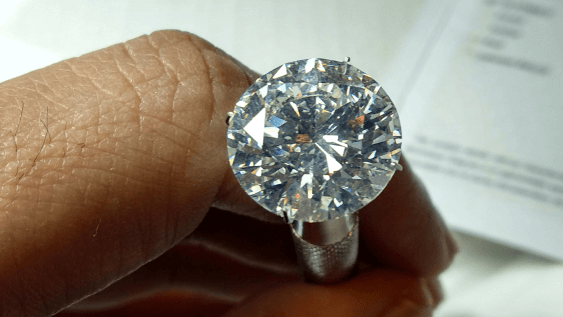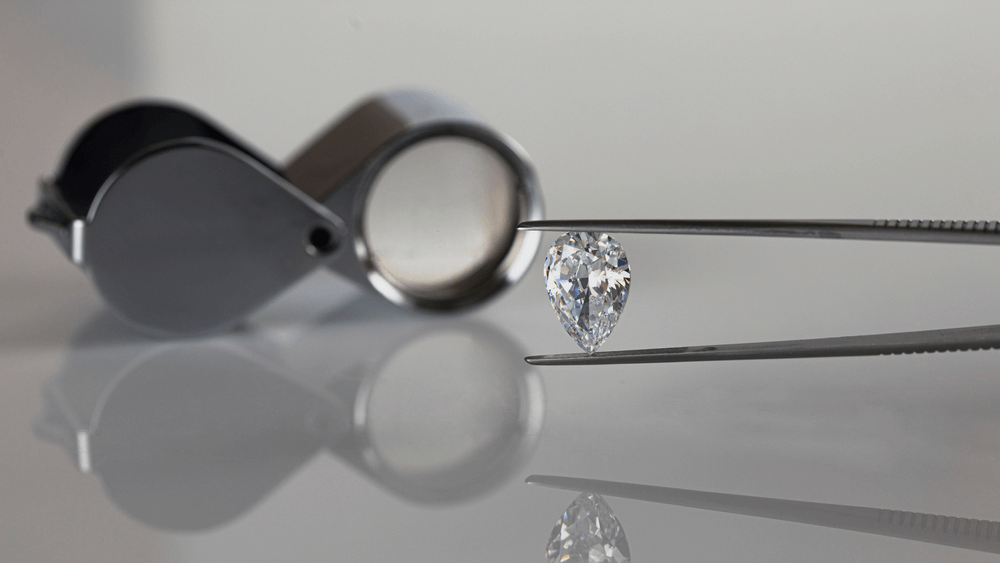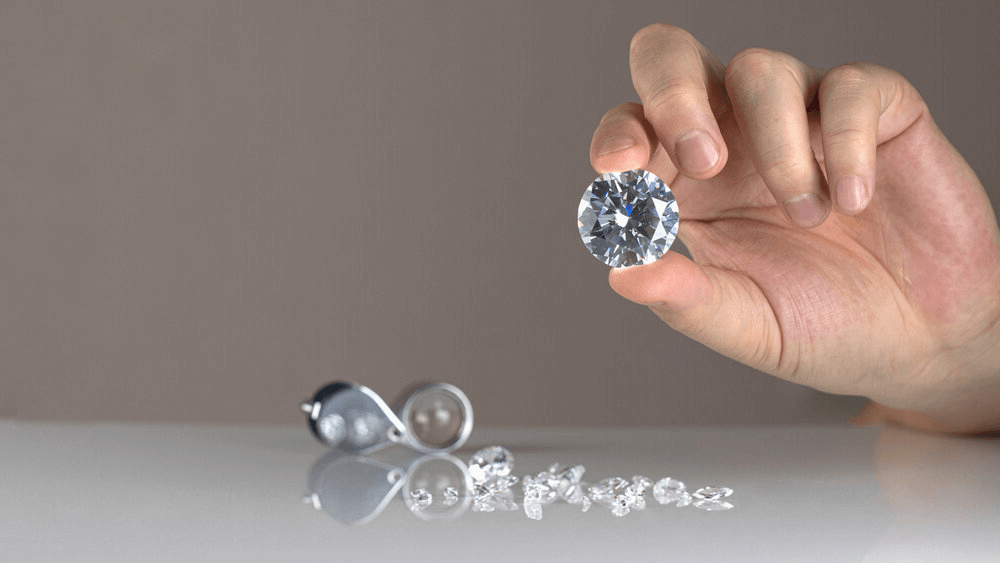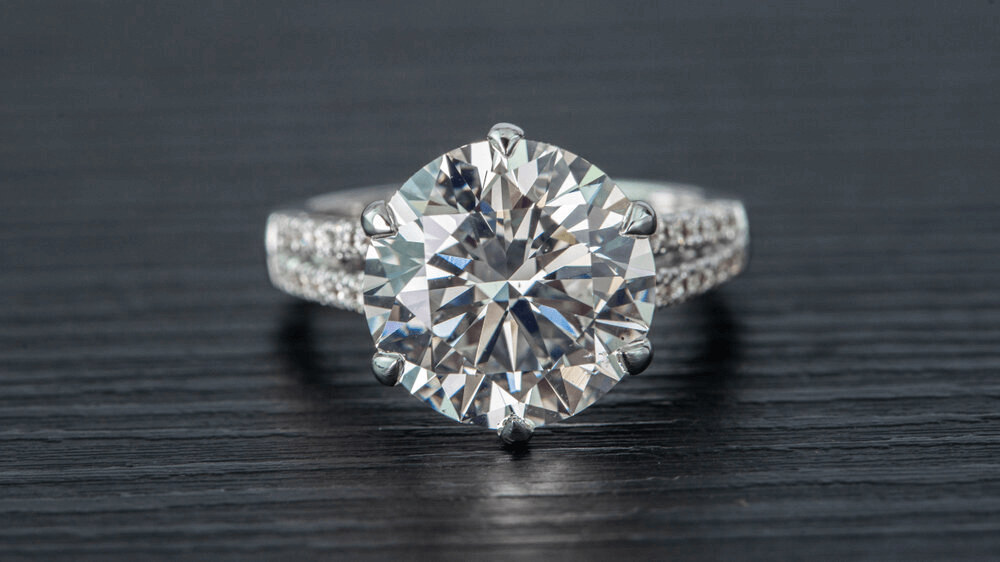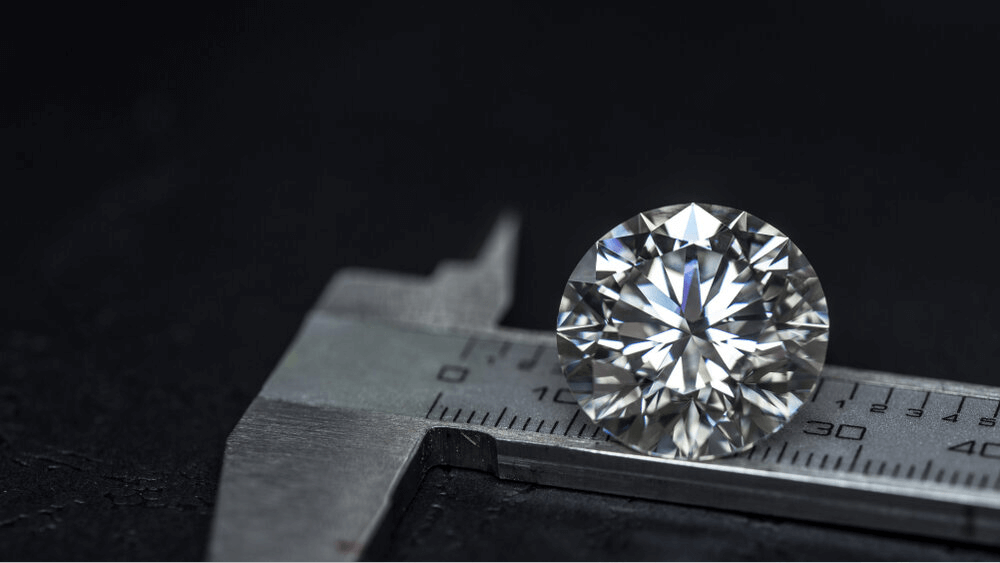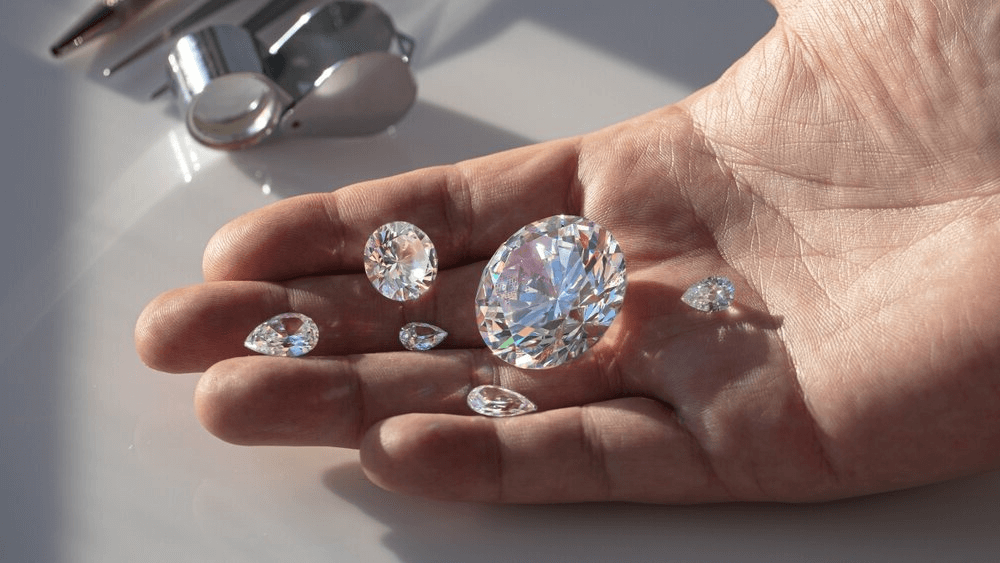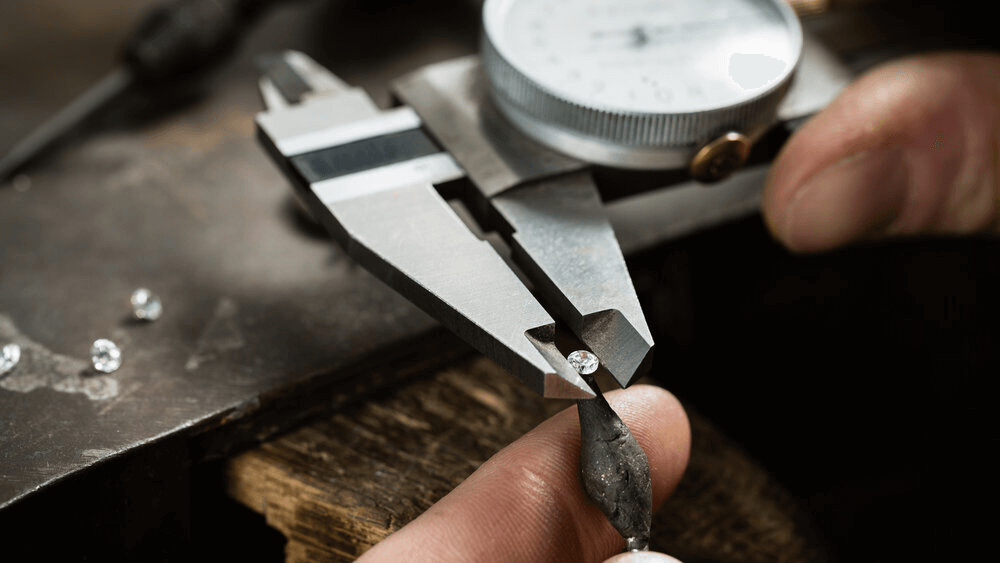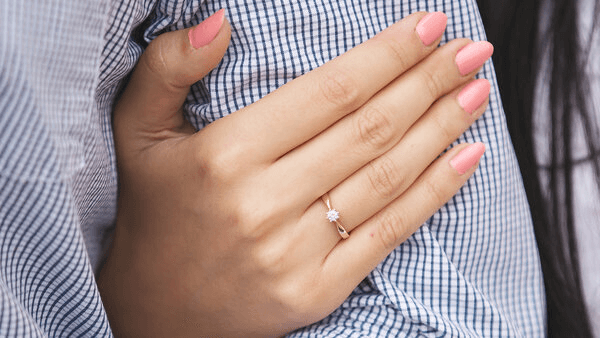Unlock Radiance: The Secret of Melee Diamonds

By Gary A.

Edited by Olivia H.
Published Aug 8, 2024
Edited on Mar 31, 2025
Explore the world of melee diamonds and learn how these small gems add incredible sparkle and value to engagement rings in this comprehensive guide.

Navigate This Guide:
- 8 Quick Tips for Buying a Diamond Engagement Ring with Melee Diamonds
- Introduction: The Hidden Gems of Melee Diamonds
- Unveiling the Mystique: Types and Cuts
- The Art of Melee Diamonds in Engagement Rings
- Understanding Quality and Value
- Our Expert Take
- 10 Frequently Asked Questions about Melee Diamonds
Before we dive deeper into the specifics, here are some practical tips to help guide your decision-making process:
8 Quick Tips for Buying a Diamond Engagement Ring with Melee Diamonds
When purchasing a diamond engagement ring adorned with melee diamonds, paying attention to detail is crucial. These tiny diamonds play a significant role in the ring’s overall brilliance and aesthetic. Below are practical tips to guide you through the process, ensuring you make an informed decision.
- Tip 1: Examine the Cut Quality
- Cut: The sparkle of melee diamonds hinges on their cut quality. Opt for rings where melee diamonds exhibit excellent cut quality to enhance overall brilliance.
- Tip 2: Assess Carat Weight Appropriately
- Carat: Understand that the carat weight of melee diamonds contributes to the ring’s total value. It’s essential to consider both the individual and total carat weight of the melee diamonds in the setting.
- Tip 3: Check for Clarity Consistency
- Clarity: Ensure the melee diamonds maintain consistent clarity, as significant variations can affect the ring’s visual harmony and value.
- Tip 4: Ensure Color Harmony
- Color: Melee diamonds should match the color grade of the center stone to maintain aesthetic uniformity. A mismatch in color can detract from the ring’s beauty.
- Tip 5: Verify the Setting’s Security
- Ring Setting & Craftsmanship: A secure setting is crucial for melee diamonds. Inspect the craftsmanship to ensure the diamonds are securely set, especially in pavé or micro-pavé settings, to prevent potential loss.
- Tip 6: Request Comprehensive Certification
- Certification: For assurance of quality, request a certificate from a reputable gemological institute detailing the 4Cs of the center stone and the overall grade of the melee diamonds.
- Tip 7: Be Informed About Synthetic and Treated Diamonds
- Synthetic and Treated Diamonds: Inquire about the nature of the melee diamonds—whether they are natural or synthetic. Understand the implications of any treatments applied to enhance their appearance.
- Tip 8: Understand the Price Dynamics
- Price Awareness: Conduct market research to grasp the current pricing trends of melee diamonds. Ensure the ring’s price aligns with the quality, craftsmanship, and carat weight of the diamonds.
Now that you’ve got these practical tips, use Jeweler AI below to find the perfect engagement ring that suits your style and budget:
Introduction: The Hidden Gems of Melee Diamonds
They say that some of the best things come in the smallest packages, and we know that to be true since engagement rings tend to come in a box that is not much bigger than a walnut shell. However, we can take it one step further and talk about melee diamonds, which are some of the smallest you’ll find in the world of fine jewelry.
So, while they may be small, they do a huge amount for engagement rings. Chances are, if you’ve been gathering ideas already for the design of your engagement ring or wedding band, you have come across – and fallen head over heels for – a design featuring melee diamonds.
What are Melee Diamonds?
Melee diamonds are particularly small diamonds – much smaller than you would expect to see as the center stone of an engagement ring. Technically speaking, a melee diamond weighs no more than 0.2 carats – although, at times, a diamond slightly larger than that may be referred to (or used as) a melee diamond.
To put that into perspective, a melee diamond is about 1/5 of the size of a standard diamond used in the center setting of an engagement ring in the US. 0.2 carats equates to around 3.8 millimeters in diameter for a round brilliant diamond.
Their Unique Role in Jewelry
In most instances, melee diamonds are even smaller than that. If you are familiar with the pavé setting – which, as one of the most popular ring design options out there, you should be – then you’ll have seen plenty of examples already of melee diamonds in action. Even at those tiny sizes, they pack a huge punch in terms of sparkle.
Why Melee Diamonds?
Melee diamonds are not as visually impressive as the sort of diamonds you would find in center stones, but they play a vital (and irreplaceable) role in so many ring designs – and other jewelry designs, too.
Since they’re so much smaller than ‘normal’ sized diamonds, melee diamonds sparkle very differently. Those displays of fire and brilliance are much more ‘glittery’ in appearance – very effervescent and lively under light sources. When you get a melee diamond on its own, it’s not hugely impressive – but, when they’re set alongside one another or ‘clustered’ together, the scintillation is really eye-catching.
That’s what they’re there for – adding extra sparkle and beauty to rings, rather than representing the main focal point.
Unveiling the Mystique: Types and Cuts
When it comes to these tiny stones, the cut is paramount. Different cuts can drastically change the overall appearance of the ring, along with its light performance.
When selecting melee diamonds, you’ll encounter two primary cuts: single cut and full cut. Here’s what you need to know…
Single Cut vs. Full Cut: A Detailed Comparison
Single cut diamonds have 17 to 18 facets, giving them a simpler, yet elegant look. This type of cut is often used in vintage-inspired jewelry, where the emphasis is on understated sparkle and a timeless appearance.
On the other hand, full cut melee diamonds boast 57 to 58 facets – the same number as a standard round brilliant cut diamond. This allows them to catch the light in more intricate ways, offering a dazzling display of brilliance and fire. Full cut melee diamonds are typically favored in contemporary designs where maximum sparkle is desired.
Selecting the Perfect Cut for Your Ring
Choosing between single cut and full cut melee diamonds ultimately comes down to the style of your ring and personal preference. If your design leans towards a vintage or classic aesthetic, single cut melee diamonds might be the perfect choice, providing a soft, elegant glimmer. For modern designs or if you’re looking for that extra dazzle, full cut melee diamonds will add a stunning, lively sparkle to your piece.
The Art of Melee Diamonds in Engagement Rings
So, you know what melee diamonds are now. But, if you haven’t done your research on diamond engagement ring designs, how are these melee diamonds even used? How much do they really offer a design? As it turns out, a lot…
Halo, Pavé, and More: Setting Styles Explained
One of the most popular ways to utilise melee diamonds is in the creation of a Halo. Without these small and dainty diamonds, a halo wouldn’t be possible – instead, it would appear more like a plain bezel encircling the center stone.
You can find out everything you need to know about halos here. Suffice to say that they remain one of the most popular options out there for engagement rings, not least of all because of the extra grandeur and wow factor they bring to the center stone (without overwhelming it).
As we mentioned above, pavé is another solid argument in favor of the melee diamond. Characterized by a neat row of melee diamonds set along the length of the shank, this setting type offers extra sparkle without adding more bulk to the center setting, as in the case of the halo.
Read all about the pavé here.
Melee diamonds are also used in features like the channel setting and, in some cases, flush set wedding bands, too.
How Melee Diamonds Enhance the Center Stone
Melee diamonds don’t sparkle like bigger diamonds, that much we can all agree on. They are less impressive, but that’s no bad thing. The point of the center stone is to attract the most attention – that’s why it’s there – but support acts will make it look even better, rather than detracting from it.
The superior sparkle of that center stone will shine through (pun intended), and the glitter of the melee diamonds will boost the overall light performance surrounding the ring. That’s how they enhance your main diamond.
Understanding Quality and Value
melee diamonds are not scrutinized to the same degree as center stone diamonds. Because they’re so much smaller, factors like color and clarity aren’t quite so important. It’s a lot harder to spot a minor inclusion in a melee diamond than it is in, say, a 5 carat diamond.
The Four Cs of Melee Diamonds
For this reason, jewellers typically purchase mele diamonds in larger batches. These batches tend to be delivered in special envelopes, and each envelope will be marked as containing a specific quality level. So, a jeweler might receive an envelope of melee diamonds with a particular color and clarity grade range – say, G-H and VS1-VS2.
Ensuring Consistency and Quality
Ensuring melee diamonds are similar is particularly important when it comes to color, since minor discrepancies in color can be a lot more obvious when two diamonds are placed alongside one another.
Pricing Guide: What to Expect
Melee diamonds are much cheaper than other diamonds since they are a very common by-product of the diamond-cutting process. When a diamond cutter works to achieve the right shape for a diamond from a rough stone, off-cuts are very often turned into melee diamonds.
A small volume of melee diamonds – enough for a standard ring design – can cost as little as a few hundred dollars to $1,000+, depending on the quality of the diamonds. Generally speaking, the cost of melee diamonds should fall comfortably within the budget you set for the ring (that all-important 20% of your overall budget).
Our Expert Take
Melee diamonds are an important part of many ring designs. True, they will never be the most important aspect of an engagement ring, and people are much more likely to focus on the center diamond than the other melee stones that come up but that doesn’t mean that they don’t serve a very important purpose for the design.
Boosting sparkle, giving the design that glittery look, and lending an extra touch of luxury to your engagement ring are all very valid jobs in our opinion.
10 Frequently Asked Questions about Melee Diamonds
- Q: What are melee diamonds?
- A: Melee diamonds are small diamonds, typically weighing less than 0.20 carats, used to accentuate larger stones in jewelry, particularly in engagement rings and other fine jewelry pieces.
- Q: How much do melee diamonds cost?
- A: The cost of melee diamonds can vary widely based on their quality (cut, color, clarity) and total carat weight. Generally, prices can range from $300 to $400 per carat for average-quality melees.
- Q: Are melee diamonds worth anything?
- A: Yes, melee diamonds do hold value, especially when they are of high quality and used in well-crafted jewelry settings. Their value contributes to the overall worth of the jewelry piece.
- Q: How are melee diamonds cut?
- A: Melee diamonds can be either single cut, with 17 or 18 facets, or full cut, mirroring the 57 or 58 facets of a standard round brilliant diamond. The cutting process is precise to ensure maximum brilliance.
- Q: Can melee diamonds be lab-grown?
- A: Yes, melee diamonds can be both natural or lab-grown. Lab-grown melee diamonds offer an ethical and often more affordable alternative to their natural counterparts.
- Q: How can you tell if melee diamonds are real?
- A: Determining if melee diamonds are real typically requires professional gemological equipment. However, buying from reputable dealers and requesting certification can ensure authenticity.
- Q: What size are melee diamonds?
- A: Melee diamonds vary in size but are generally small, often ranging from just under a millimeter in diameter to around 2.5 mm for larger melees.
- Q: How are melee diamonds set in jewelry?
- A: Melee diamonds are commonly set in jewelry using pavé, micro-pavé, bezel, or channel setting techniques, which secure the stones and enhance the piece’s overall sparkle.
- Q: Do melee diamonds fall out easily?
- A: Melee diamonds can become loose and potentially fall out if not set correctly or if the jewelry undergoes rough handling. It’s crucial to check the setting’s integrity and consider periodic professional inspections.
- Q: Can you buy loose melee diamonds?
- A: Yes, loose melee diamonds can be purchased, often in parcels or lots, from diamond wholesalers or specialized dealers. This option is popular among jewelers and designers for custom jewelry creations.
Discover your perfect ring with Jeweler AI – where melee diamonds meet modern elegance.
Here are more specific diamond prices topics to browse:
- Small Diamond Engagement Rings: Big Sparkle Comes In Little Packages
- 0.25 Carat Diamond: Tiny Treasure or Just Too Small?
- The True Value of a 0.5 Carat Diamond Ring Revealed
- 0.7, 0.8, 0.9 Carat Diamond Showdown: Which One Wins?
- Price Alert: Don’t Overpay for a 1 Carat Diamond Ring!
- What You Should Pay for a 1.5 Carat Diamond Ring?
- Price Alert: How Much Should You Pay for a 2 Carat Diamond Ring?
- How Much Does a 2.5 Carat Diamond Really Cost?
- The Real Cost of a 3 Carat Diamond Ring
- Industry Secret: How Much Does a 4-Carat Diamond Ring Actually Cost?
- How Much is Too Much? The True Cost of 5 Carat Diamond Ring!
- 6 Carat Diamond Rings: Pricing Breakdown & Value Tips
- 7 Carat Diamond Rings: Affordable Luxury Prices Revealed
- 8 Carat Diamond Rings: Price Comparison & Savings Tips
- 9 Carat Diamond Rings: Detailed Pricing Guide & Best Deals
- 10-13 Carat Diamonds: The Ultimate Symbol of Luxury!
- 15 Carat Diamonds: Why Celebrities Love Them!
- Unveiling the Majesty: The Secrets Behind the 20 Carat Diamond Ring!
- Decoding the Grandeur: The Journey to Choosing a 25 Carat Diamond Ring
- Average Carat Size for Rings: What’s the Ideal?
- Understanding What Is CTTW Diamond In Engagement Ring
- The Truth About Why Diamonds Are So Expensive and Incredibly Valuable
FOLLOW-UP GUIDE SERIES

